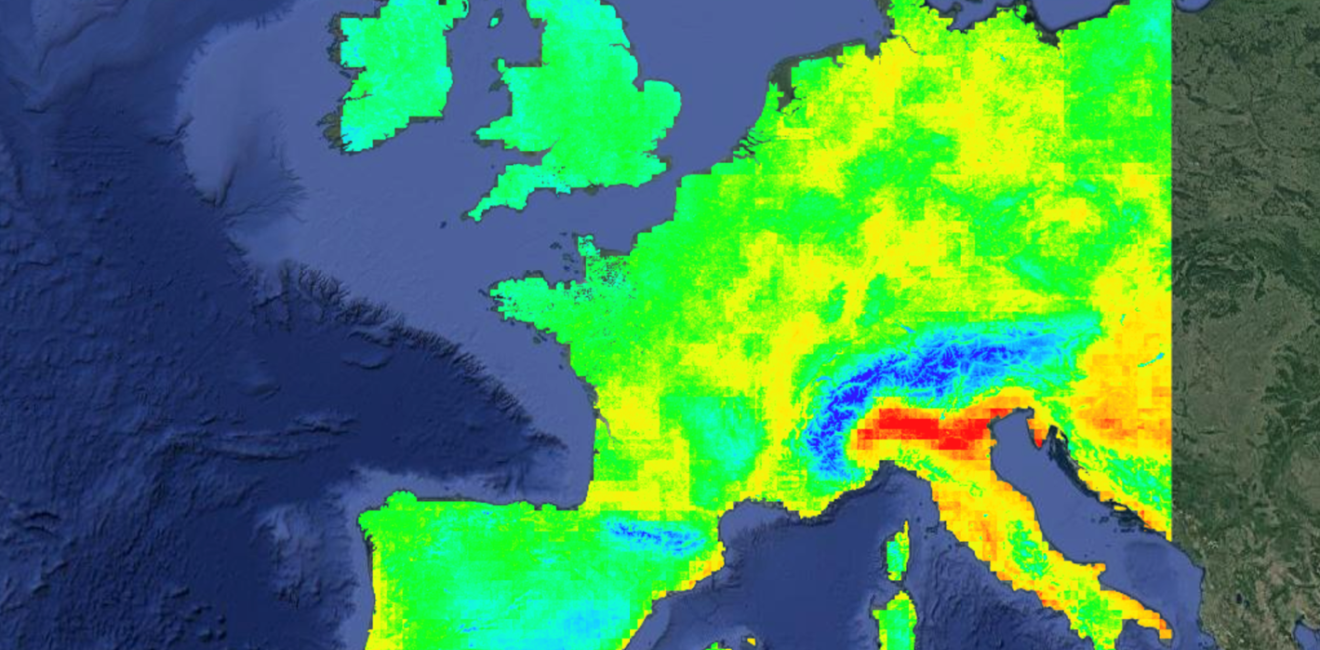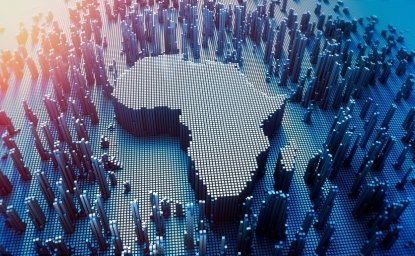
A blog of the Science and Technology Innovation Program
Throughout the day, there is a good chance that a satellite has taken a picture right above your head. With that picture comes a bulk of auxiliary information -- collecting data on the precipitation levels, groundwater, vegetation, and a litany of other ecosystem indicators. These satellites are set up to continuously collect and store data as they circle the globe. In the age of big data and in response to calls for more open source datasets, the National Aeronautics and Space Administration (NASA) is – and has been for quite some time -- throwing their proverbial hat into the ring.
To highlight the depth of data collection and all its implications, the Global Precipitation Mission program at NASA teamed up with the Wilson Center on May 17, 2018, to hold the Vector-Borne and Water-Related Disease Workshop in Washington DC. Vector-borne diseases originate and are transmitted from a living organism, perhaps most commonly arthropods (insects like mosquitos and ticks), to a human. Water-related disease is caused by parasitic organisms, bacteria, and pathogens found in unsanitary drinking water. The workshop served as an incubator to bring together experts, many already using NASA’s data, to discuss innovative ways to apply, analyze, and collect complementary information to understand and track these crucial diseases.
Full video from the event can be found on YouTube
The applications for Earth observation data are expansive when it comes to the study of disease. Satellites can monitor changes that occur on land from the amount of rainfall to locations of deforestation. These are vital indicators for the prediction and understanding of mosquito breeding grounds that are known vectors of disease. Stagnant water and places with few trees (such as newly deforested lands) carry a substantial risk of becoming zones of high mosquito populations. By collecting multiple layers of environmental data indicators and interlaying them on the same map, spots of high risk can be flagged as areas susceptible to species-specific mosquito breeding.
Since the data is consistently collected, longitudinal studies can be updated on a regular basis. This type of data refresh gives researchers the chance to watch their predictions unfold in real time. The Vector-Borne and Water-Related Disease Workshop served as a space where this data could be understood from the perspective of multiple use practices. First by the researchers interacting with the data daily, then by public health officials who use the findings to understand a disease and compel organizations and governments to take action, and lastly by citizen scientists who offer the dual advantage of serving as precise data collectors and knowledge acceptors and sharers.
Need for Building Capacity for Health Innovation
At the workshop, leading epidemiologists who use NASA datasets shared their findings and case studies on the topics of Malaria, Cholera and the data’s implications in disease monitoring and potential disease forecasting. For example, and expanding on an earlier point, deforestation and the general loss of trees are data captured by these satellites. Without trees, the shade usually provided by the canopy is lost, making the surrounding areas and possible bodies of water increase in temperature and hospitability towards mosquitos. This information could be collected and analyzed before the peak mosquito season allowing for the timely distribution of warning information to the public. For places like Peru, this would alert officials to new areas of endemic Malaria outbreaks.
While the aspirations for this type of research are monumental, the logistics, in practice require increased capacity building and foresight to ensure the proper allocation and use of public health materials and goods. Capacity building not only refers to health care centers and brick and mortar institutions but rather the need for data standardization as well as a further understanding of necessary data granularity or resolution. Data standardization is crucial when researchers begin to analyze large and distinct datasets from multiple agencies on both international and national levels. Data granularity refers to the precision of data, which can vary from the level of a city to a single home. Developing cross-sector and mutually beneficial protocols on granularity and overall standards will allow for greater national and international collaboration on public health crises that know no borders, on the state or country level. These are the obstacles the workshop intended to bring to light and emphasize the diversity of perspectives on the issues.
Data granularity and standardization are trending topics throughout all of academia. In the workshop, the need for data innovation and curating, discussed in the public health panel and in break out discussions, was crucial in the workshop’s other focus on the recent developments in public health around the discussion of the One Health framework. This framework describes the need to analyze the animal, human, and environmental factors that contribute to and influence disease dynamics. For example, the Peruvian case study of deforested areas is key to understanding mosquito habitats, which in turn can be used in within-country migration data of the working population that is strongly influenced by logging season that contributes to deforestation.
Essentially these studies used environmental indicators (deforestation) to predict animal (mosquito) population occurrence to forecast human disease (Malaria) transmission. Champions of the One Health framework see this type of cross-disciplinary understanding of viral transfer as integral in predicting and preventing the future of disease, both infectious and otherwise. Data collected by organizations like NASA, the US Department of Agriculture (USDA), or the World Health Organization (WHO) needs to be interoperable to make a difference in the way public health programs are implemented. By mobilizing and elevating the dialogue around the relatively new discipline of One Health, the arguments for international data standards around animal, environmental, and human health are bolstered because of their interconnectedness under the framework.
[[{"fid":"123561","view_mode":"default","fields":{"field_file_image_alt_text[und][0][value]":"Rusty Low, Institute for Global Environmental Strategies","field_file_image_title_text[und][0][value]":"","field_file_source[und][0][value]":"Presentation at the Vector-Borne Disease Workshop, Surveillance, Mitigation, Education: GLOBE Observer Mosquito Habitat Mapper App, by Rusty Low PhD Institute for Global Environmental Strategies","field_file_caption[und][0][value]":""},"type":"media","attributes":{"alt":"Rusty Low, Institute for Global Environmental Strategies","class":"media-element file-default"}}]]
Citizen Science: A Growing Force
Collecting interoperable data benefits not only science professionals but also the citizen scientists of the world voluntarily contributing to the overall mission of combating infectious disease. Citizen science is a rapidly growing paradigm where a motivated public can affect social, political, and cultural change through science. For water and vector-borne diseases, citizen science volunteers have already been collecting data with their phones through apps like the GLOBE Mosquito Habitat Mapper, serving as a compliment to Earth observation data. The dual strength of citizen science vector monitoring lies in the precision associated with mosquito habitat monitoring on the neighborhood level coupled with the public health awareness campaigns associated with citizen science projects.
As one proof-of-concept demonstrating the value of integrating citizen science and remote sensing data, a NASA DEVELOP team displayed the data integration possible by presenting a heat map combining the NASA satellite data in concert with citizen-collected mosquito presence data. For the regions sampled, correlations were uncovered about specific environmental variables and their effect on mosquito presence data across Western Europe. The public’s role in its own health data collection is growing and by creating public access protocols and datasets, like NASA has done, citizen science data has the potential of reaching a larger audience via citizen-agency collaboration.
Punctuating the workshop’s panels and discussions, keynote presentations were delivered by Rep. Bill Foster of Illinois 11th district, Dr. Rita Colwell, and Dr. Madeleine Thomson. Each speaker was able to contribute their expertise in science policy, vector-borne disease monitoring, and public health outreach. They were able to drive home the idea that, illustrating with the context of examples from their own careers, the need for cross-disciplinary, and international, coordination for effective disease containment and prevention. This institutional collaboration would be greatly enhanced by a further investment in open data sources and databases.
Unsurprisingly, data was the cornerstone of each discussion at the workshop. NASA’s publicly available Earth observations data are being used by epidemiologists to study countries the world over. However, without common data management practices among public health researchers and NASA’s data scientists, the potential of Earth observations information within the public health community and the One Health framework is not fully taken advantage of. Not to mention, the ongoing citizen science collected data on water quality, vector occurrence, and other indicators possibly serving as a complement to NASA’s datasets; making the associated field of research more holistic.
In order to combat some of the globe’s most endemic and destructive diseases like Malaria or Cholera, all measures available should be accounted for and utilized in the name of proactive rather than reactive disease response. This means: embracing open data sets akin to NASA’s Earth observations, framing health and wellness around the delicate balance of an environment using a diversity of complementary datasets, and taping into one of the strongest resources available, a highly energized public.
Read More
For a greater understanding of One Health and how monitoring enhances the framework check out our blog post Zoonotic Disease and the Possibilities with EBV Monitoring.
To read more on citizen science and upcoming innovations in the field be sure to take a look at Earth Challenge 2020
Acknowledgements
The Wilson Center would like to thank NASA’s GPM Mission, our co-host of the workshop, and Johnson & Johnson, for allowing the day’s discussions to continue during a networking reception.
Header photo courtesy of the NASA DEVELOP Team's Presentation by Julia Heslin, an illustration of mosquito habitat sustainability using environmental data layering
Author


Science and Technology Innovation Program
The Science and Technology Innovation Program (STIP) serves as the bridge between technologists, policymakers, industry, and global stakeholders. Read more





